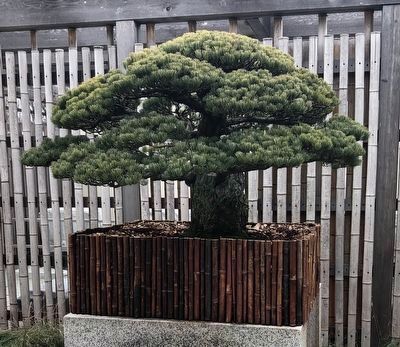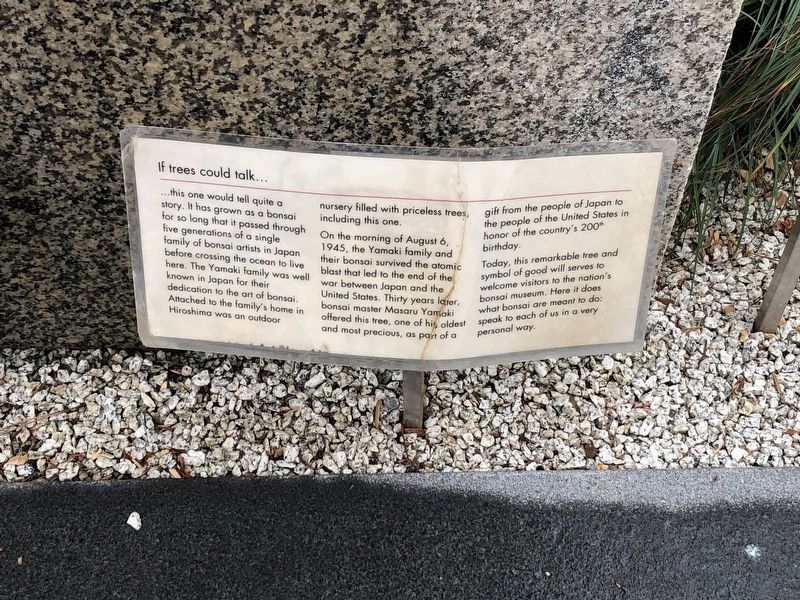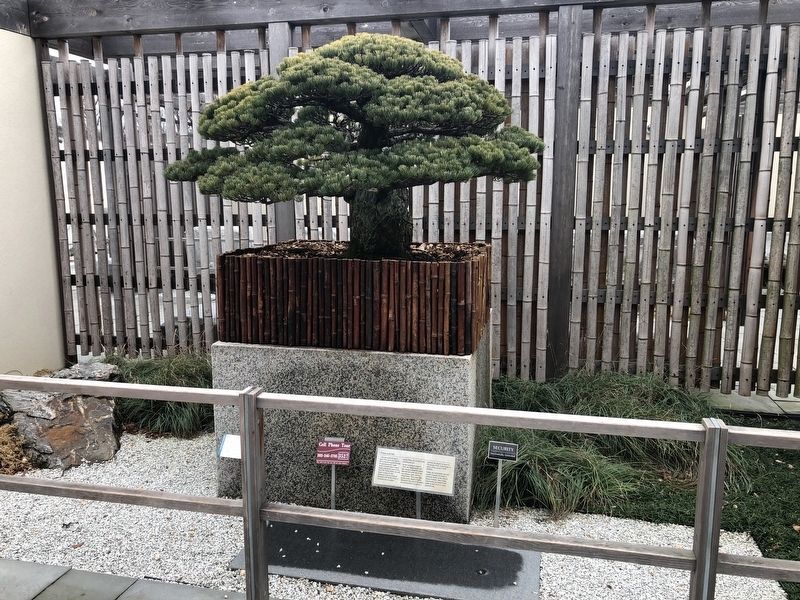National Bonsai Museum in Northeast Washington in Washington, District of Columbia — The American Northeast (Mid-Atlantic)
If trees could talk…
…this one would tell quite a story. It has grown as a bonsai for so long that it passed through five generations of a single family of bonsai artists in Japan before crossing the ocean to live here. The Yamaki family was well known in Japan for their dedication to the art of bonsai. Attached to the family's home in Hiroshima was an outdoor nursery filled with priceless trees, including this one.
On the morning of August 6, 1945, the Yamaki family and their bonsai survived the atomic blast that led to the end of the war between Japan and the United States. Thirty years later, bonsai master Masaru Yamaki offered this tree, one of his oldest and most precious, as part of a gift from the people of Japan to the people of the United States in honor of the country's 200th birthday.
Today, this remarkable tree and symbol of good will serves to welcome visitors to the nation's bonsai museum. Here it does what bonsai are meant to do: speak to each of us in a very personal way.
Erected by U.S. Department of Agriculture.
Topics and series. This historical marker is listed in these topic lists: Arts, Letters, Music • Horticulture & Forestry • Peace • War, World II. In addition, it is included in the Historic Trees series list. A significant historical date for this entry is August 6, 1945.
Location. This marker has been replaced by another marker nearby. It was located near 38° 54.765′ N, 76° 58.121′ W. Marker was in Northeast Washington in Washington, District of Columbia. It was in National Bonsai Museum. Marker could be reached from Meadow Road Northeast just west of Ellipse Road Northeast, on the right when traveling west. Touch for map. Marker was at or near this postal address: 3501 New York Ave NE, Washington DC 20002, United States of America. Touch for directions.
Other nearby markers. At least 8 other markers are within walking distance of this location. What shape do you see? (a few steps from this marker); Inherited Wealth (a few steps from this marker); An Art Form Is Born (a few steps from this marker); Bonsai Pioneer (within shouting distance of this marker); National Bonsai & Pensing Museum (within shouting distance of this marker); "There are no borders in bonsai…" (within shouting distance of this marker); Branching Out (within shouting distance of this marker); a different marker also named If trees could talk… (within shouting distance of this marker). Touch for a list and map of all markers in Northeast Washington.
Related marker. Click here for another marker that is related to this marker. This marker has been replaced with the linked marker which has slightly different text.
Also see . . . The National Bonsai Foundation 2020 Annual Report (PDF).
Since 1625, the tree had been passed down through the Yamaki family. For several generations, the pine resided in a commercial bonsai nursery in Hiroshima, Japan, at the family’s private nursery. In 1945, the United States dropped the world’s first atomic bomb less than two miles from the Yamaki residence. Incredibly, a wall constructed around the family’s bonsai protected their collection from any harm the blast could have caused – and the Yamaki pine continued to stand strong.(Submitted on July 29, 2022.)

Photographed By Devry Becker Jones (CC0), January 11, 2020
3. The Yamaki Pine
Japanese white pine bonsai, planted in 1625, is 44 inches high and weighs 400 pounds.
Credits. This page was last revised on January 30, 2023. It was originally submitted on January 11, 2020, by Devry Becker Jones of Washington, District of Columbia. This page has been viewed 346 times since then and 25 times this year. It was the Marker of the Week July 31, 2022. Photos: 1, 2, 3. submitted on January 11, 2020, by Devry Becker Jones of Washington, District of Columbia.

